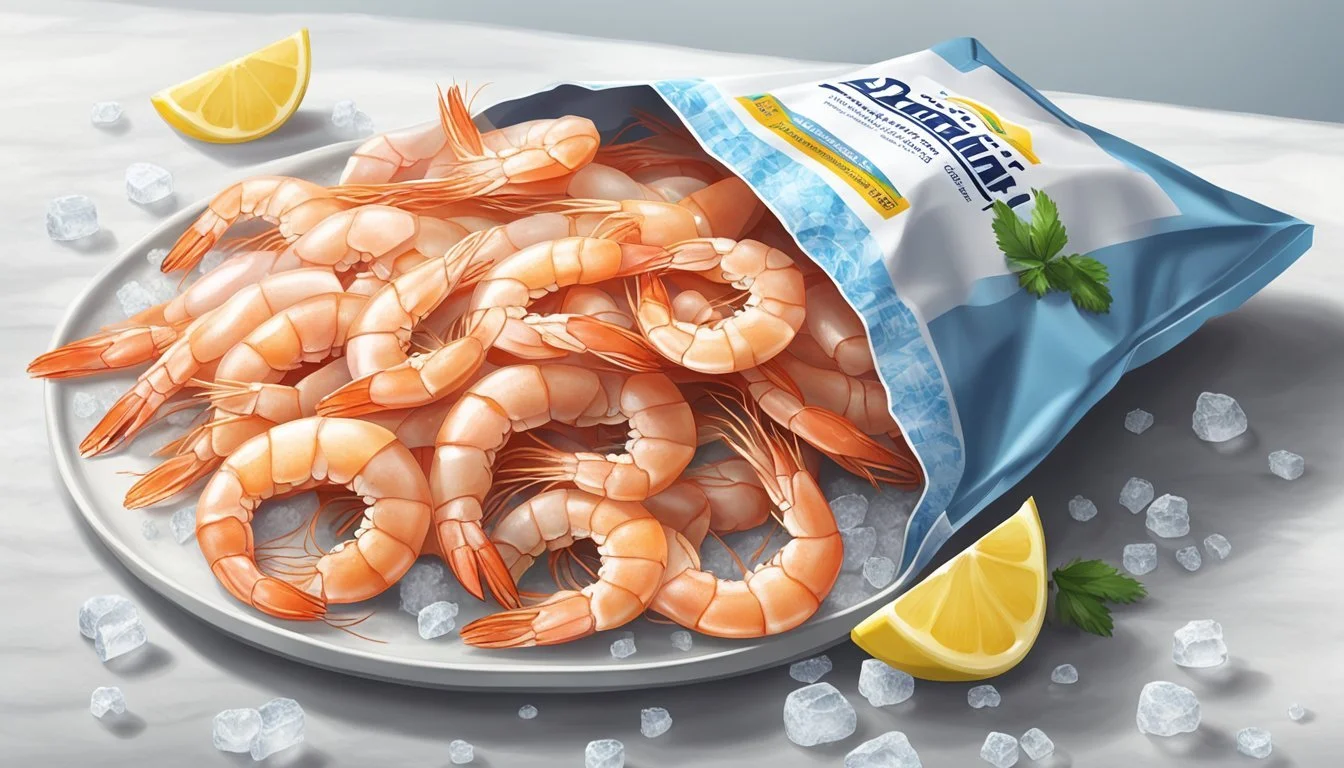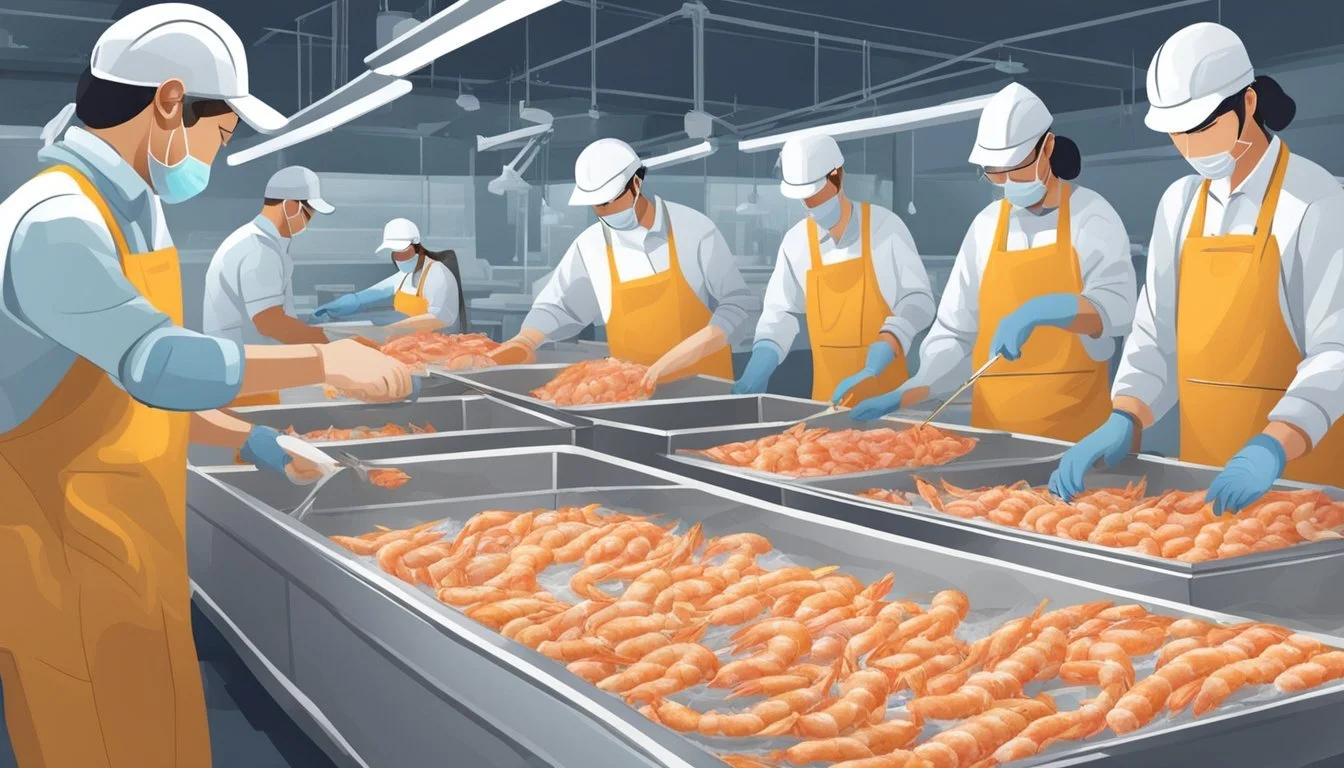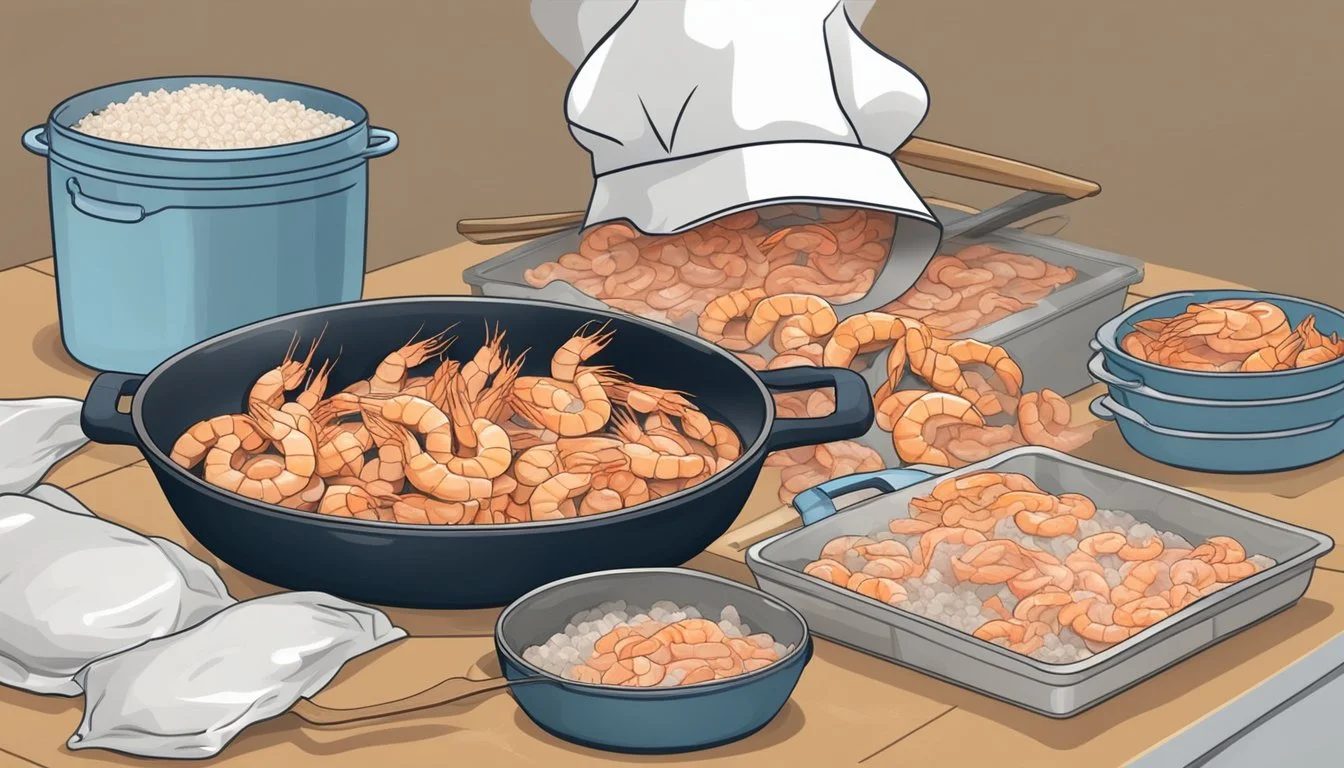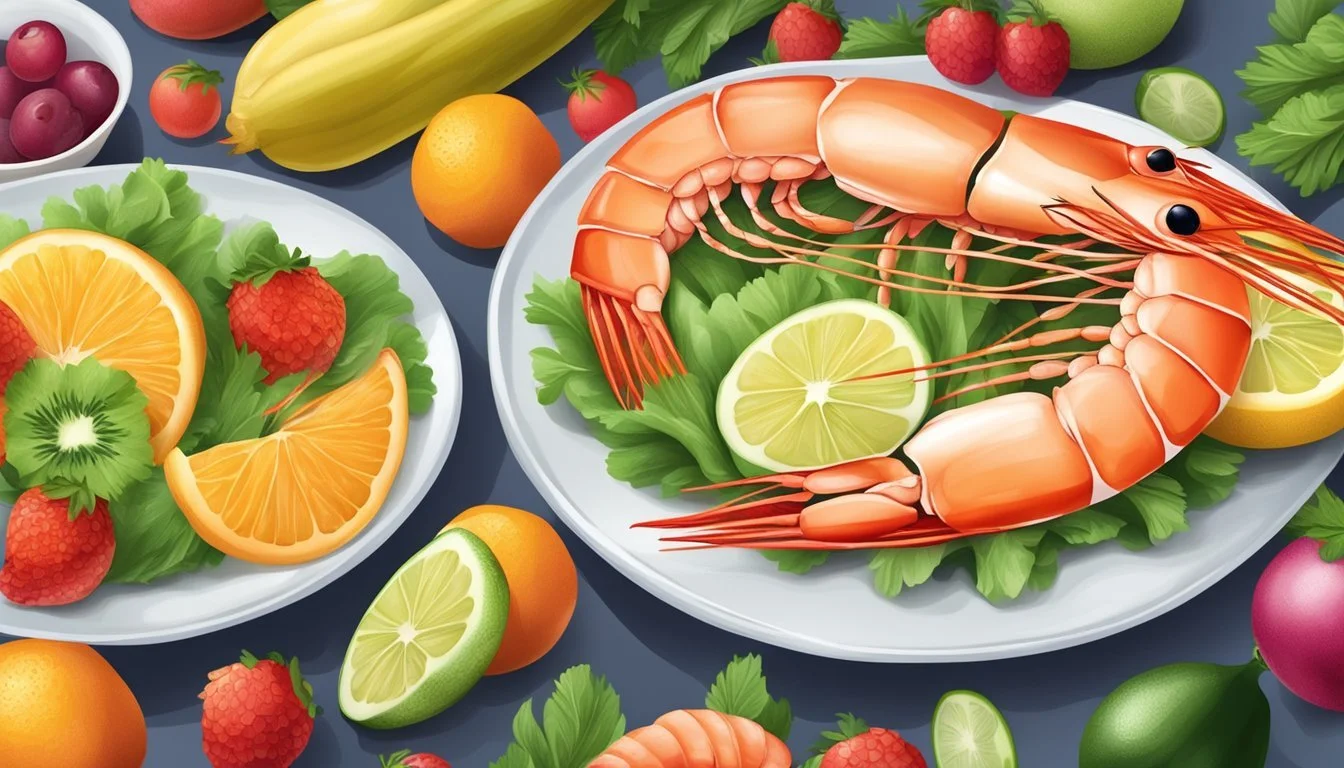Fresh vs Frozen Shrimp: A Comparison of Quality, Flavor, and Convenience
When it comes to buying shrimp at the grocery store, many shoppers face a common dilemma: fresh or frozen? Contrary to popular belief, the "fresh" shrimp displayed on ice at the seafood counter are often not as fresh as they appear. Most shrimp sold as fresh in grocery stores have actually been previously frozen and thawed for display. This revelation may come as a surprise to many consumers who assume they're purchasing recently caught seafood.
Frozen shrimp, on the other hand, offers several advantages. These shrimp are typically frozen shortly after being caught, preserving their flavor and texture at their peak. Individually quick frozen (IQF) shrimp are particularly convenient, allowing consumers to thaw only the amount needed. When selecting frozen shrimp, it's important to avoid packages with signs of freezer burn or excessive ice, as these can negatively impact taste and texture.
For those lucky enough to live near coastal areas, truly fresh, never-frozen shrimp may be available. These shrimp often have their heads intact and possess a distinct saltwater aroma and firm texture. However, for most consumers, high-quality frozen shrimp remain the best option for ensuring freshness and flavor in their seafood dishes.
Understanding Shrimp
Shrimp are small crustaceans that belong to the seafood category. They are popular for their delicate flavor and versatile culinary applications.
Several species of shrimp are commonly consumed. White shrimp, brown shrimp, and pink shrimp are among the most widely available varieties in North America.
Tiger shrimp, known for their distinctive stripes, are larger and often considered a premium option. Rock shrimp have a harder shell and a texture similar to lobster.
Shrimp sizes are often categorized by count per pound. Larger shrimp have lower counts, while smaller shrimp have higher counts.
Common shrimp sizes:
Jumbo: 21-25 per pound
Large: 31-35 per pound
Medium: 41-50 per pound
Shrimp can be sold with or without shells. Shell-on shrimp retain more flavor during cooking, while peeled shrimp offer convenience.
Most shrimp undergo a freezing process shortly after being caught to preserve freshness. This practice ensures high quality and extends shelf life.
When selecting shrimp, look for firm texture and a mild, ocean-like scent. Avoid any with strong odors or discoloration.
Fresh Vs. Frozen Shrimp: An Overview
When buying shrimp, consumers face a choice between fresh and frozen options. Each type has distinct characteristics that affect quality, convenience, and culinary applications.
Defining Freshness
"Fresh" shrimp at grocery stores often aren't truly fresh. Many have been previously frozen and thawed for display. Truly fresh shrimp are typically local and wild-caught, with heads intact and a firm texture. They emit a mild, salty aroma reminiscent of the sea.
These shrimp offer superior flavor but have a short shelf life. Consumers should use them within 24 hours of purchase. After this time, the flesh begins to degrade, becoming mushy and less flavorful.
Local markets near coastal areas are the best sources for genuinely fresh shrimp. Inland shoppers may find it challenging to obtain truly fresh options.
Frozen Shrimp Advantages
Frozen shrimp provide consistent quality and convenience. They're flash-frozen shortly after catch, preserving their texture and taste. This process locks in freshness, allowing for longer storage without significant quality loss.
Frozen options offer flexibility in meal planning. Consumers can defrost only the amount needed, reducing waste. Many frozen shrimp come pre-peeled and deveined, saving preparation time.
Quality frozen shrimp should be free of freezer burn and excess ice. When properly stored, they maintain their flavor and texture for months. For optimal results, thaw frozen shrimp just before cooking to preserve their firm texture and sweet taste.
Quality Indicators for Shrimp
When selecting shrimp, several key factors determine their quality and freshness. Knowing what to look for helps consumers make informed choices and avoid spoiled products.
Assessing Shrimp Freshness
Fresh shrimp should have a firm texture and translucent appearance. The shells should be intact and free from damage or discoloration. High-quality shrimp will have a mild, ocean-like scent without any strong fishy or ammonia-like odors.
For frozen shrimp, look for packages without visible ice crystals or freezer burn. The shrimp should be individually frozen rather than clumped together, indicating proper freezing techniques.
When thawed, quality shrimp will have a moist surface but should not feel slimy. The color should be uniform without discolored patches.
Signs of Spoilage
Spoiled shrimp exhibit several distinct characteristics. A strong ammonia smell is a clear indicator of decomposition. Avoid shrimp with black spots or melanosis on the shell, as this can signal bacterial growth.
Slimy or mushy texture suggests the shrimp are no longer fresh. Discoloration, particularly yellowing or grayish hues, indicates deterioration. Shells that easily separate from the flesh may also point to spoilage.
For frozen shrimp, large ice crystals or freezer burn suggest improper storage or thawing and refreezing, which can compromise quality and safety.
Buying Guide
Selecting the right shrimp and understanding labels are crucial for a satisfying purchase. These key factors will help you make informed decisions at the seafood counter.
Selecting the Right Type
Choose between fresh and frozen shrimp based on your needs. Frozen shrimp often offer better quality and flexibility. Look for shrimp with firm texture and no signs of freezer burn.
Consider shell-on or peeled options. Shell-on shrimp retain more flavor but require more preparation. Peeled and deveined shrimp save time in the kitchen.
Size matters in recipes. Shrimp are sold by count per pound, with larger numbers indicating smaller shrimp. Select the appropriate size for your dish.
Understanding Labels
Read labels carefully to make informed choices. Look for "wild-caught" or "sustainably farmed" for eco-friendly options.
Check for certifications like MSC (Marine Stewardship Council) or ASC (Aquaculture Stewardship Council) for responsibly sourced shrimp.
"Previously frozen" on fresh shrimp at the seafood counter indicates it was thawed. These should be used quickly.
Look for country of origin on packaging. This information can help you choose based on preferences or sustainability concerns.
Avoid shrimp labeled with added phosphates or preservatives for the most natural flavor and texture.
Shrimp Processing and Preparation
Proper shrimp processing and preparation are crucial for optimal flavor and texture. Key steps include deveining, shelling, and choosing the right cut for your dish.
To Devein or Not
Deveining involves removing the dark vein running along a shrimp's back. This step is optional but recommended for larger shrimp. To devein, make a shallow cut along the back and remove the vein with the tip of a knife.
For smaller shrimp, deveining is often unnecessary. Some cooks prefer to leave the vein intact for added flavor. Cooked shrimp are typically pre-deveined for convenience.
Many stores offer ez-peel shrimp, which are partially shelled with the vein exposed for easy removal. This option balances convenience with flavor retention.
Different Shrimp Cuts
Shrimp cuts vary based on intended use and presentation. Shell-on shrimp retain maximum flavor and are ideal for grilling or boiling. They also protect the delicate flesh during cooking.
Peeled shrimp are convenient for quick cooking methods like sautéing or stir-frying. They absorb marinades more readily and are easier to eat in pasta dishes or salads.
Butterfly cut shrimp are split down the back, creating a flat surface. This cut is perfect for breading or stuffing. It also allows for faster, more even cooking.
Tail-on shrimp offer a compromise between convenience and presentation. The tail provides a handle for appetizers while maintaining an attractive appearance.
From Ocean to Table
Shrimp's journey from ocean to table involves various methods of harvesting and production. Understanding these processes helps consumers make informed choices about sustainability and quality.
Wild-Caught Vs. Farmed
Wild-caught shrimp are harvested from their natural habitats in oceans and coastal waters. Fishermen use boats equipped with nets to catch these crustaceans. Wild shrimp often have a more intense flavor and firmer texture compared to farmed varieties.
Farmed shrimp, also known as aquaculture, involves raising shrimp in controlled environments. This method allows for year-round production and helps meet global demand. Farmed shrimp may have a milder taste and softer texture.
Both methods have pros and cons. Wild-caught shrimp support local fishing communities but can impact marine ecosystems. Farmed shrimp reduce pressure on wild populations but may involve the use of antibiotics or chemicals.
Sustainability Certifications
Sustainability certifications help consumers identify responsibly sourced shrimp. The Marine Stewardship Council (MSC) certifies wild-caught seafood from sustainable fisheries. Look for their blue fish label on packaging.
The Monterey Bay Aquarium's Seafood Watch program provides recommendations for sustainable seafood choices. They offer a consumer guide rating shrimp options as "Best Choice," "Good Alternative," or "Avoid."
Some certifications focus on aquaculture practices. These ensure farmed shrimp are raised with minimal environmental impact and without harmful chemicals. When shopping, look for labels from reputable certification bodies to make eco-friendly choices.
Storage and Thawing Tips
Proper storage and thawing techniques are crucial for maintaining the quality and safety of shrimp. Following these guidelines ensures optimal flavor and texture while minimizing food safety risks.
Proper Freezing Techniques
Store shrimp in the coldest part of the freezer, typically at 0°F (-18°C) or below. Use airtight, moisture-proof packaging to prevent freezer burn. Vacuum-sealed bags are ideal for long-term storage.
Remove excess air from packaging before sealing to reduce ice crystal formation. Label containers with the freezing date to track freshness.
For best quality, use frozen shrimp within 3-6 months. IQF (Individually Quick Frozen) shrimp maintain superior texture and are easy to portion.
Best Thawing Practices
Never thaw shrimp at room temperature, as this promotes bacterial growth. The safest methods are refrigerator thawing and cold water thawing.
For refrigerator thawing, place frozen shrimp in a bowl and let it defrost overnight. This method is ideal for planning meals in advance.
Cold water thawing is faster. Seal shrimp in a leak-proof bag and submerge in cold tap water. Change water every 30 minutes until thawed.
Small shrimp may thaw in 30-60 minutes, while larger ones can take 1-2 hours. Cook thawed shrimp within 1-2 days for best quality and safety.
Previously frozen shrimp should not be refrozen after thawing. Use or cook immediately to preserve taste and texture.
Culinary Applications
Fresh and frozen shrimp offer versatile options for a wide range of cooking methods and recipes. Their delicate flavor and texture make them adaptable to various cuisines and preparation styles.
Cooking Methods
Grilling and broiling are excellent techniques for both fresh and frozen shrimp. Skewered shrimp create an appealing presentation for outdoor barbecues or appetizers. For grilling, thaw frozen shrimp first and pat dry to prevent sticking. Brush with oil and season before cooking for 2-3 minutes per side.
Sautéing is a quick and easy method for shrimp dishes. Heat oil in a pan over medium-high heat, add thawed shrimp, and cook for 1-2 minutes per side until pink and opaque. This technique works well for shrimp scampi or stir-fries.
Air fryers offer a healthier alternative for crispy shrimp. Coat thawed shrimp in breadcrumbs or coconut flakes, then air fry at 400°F for 5-7 minutes, shaking the basket halfway through.
Recipe Suggestions
Shrimp cocktail is a classic appetizer that showcases the natural flavor of the shellfish. Boil fresh or thawed frozen shrimp for 2-3 minutes, then chill and serve with cocktail sauce.
For a quick weeknight meal, try garlic butter shrimp pasta. Sauté shrimp in garlic and butter, toss with cooked pasta, and add lemon juice and parsley for freshness.
Head-on shrimp, while less common, offer intense flavor for stock-making or grilling. Remove heads before serving if desired. Headless shrimp are more convenient for most recipes and are widely available fresh or frozen.
Coconut shrimp provides a tropical twist. Dip shrimp in beaten egg, coat with shredded coconut and panko breadcrumbs, then fry or bake until golden brown. Serve with sweet chili sauce for dipping.
Health and Nutrition
Shrimp offer a range of nutritional benefits while being low in calories. They provide high-quality protein and essential nutrients that support overall health.
Dietary Benefits
Shrimp are an excellent source of lean protein, with about 20 grams per 3-ounce serving. This makes them ideal for maintaining muscle mass and promoting satiety. Shrimp also contain omega-3 fatty acids, particularly DHA and EPA, which are beneficial for heart and brain health.
Key vitamins and minerals in shrimp include:
Vitamin B12: 59% of the daily value per serving
Selenium: Important for immune function and thyroid health
Iodine: Essential for thyroid function
Phosphorus: 16% of the daily value per serving
Zinc: Supports immune health
Shrimp are low in calories, with only 84 calories per 3-ounce serving. This makes them a nutritious choice for those managing their weight.
Potential Allergies
Shellfish allergies are one of the most common food allergies. Symptoms can range from mild to severe and may include:
Hives or itchy skin
Tingling in the mouth
Swelling of lips, face, tongue, or throat
Difficulty breathing
Dizziness or fainting
Individuals with shellfish allergies should avoid shrimp and other crustaceans. It's crucial to read food labels carefully, as shellfish ingredients can be found in unexpected products.
Cross-contamination is also a concern. Those with severe allergies should be cautious when dining out or consuming foods prepared in shared kitchen environments.
Economic Considerations
The choice between fresh and frozen shrimp involves several financial factors. Price differences and import regulations play key roles in shaping the market and consumer decisions.
Price Comparisons
Frozen shrimp often costs less than fresh options. Bulk purchasing and efficient storage allow retailers to offer lower prices on frozen varieties. A pound of frozen shrimp typically ranges from $6 to $12, while fresh shrimp can cost $12 to $20 per pound.
Seasonal fluctuations affect prices. Fresh shrimp costs more during off-peak months. Frozen shrimp maintains consistent pricing year-round due to its longer shelf life.
Value-conscious shoppers may find individually quick frozen (IQF) shrimp a cost-effective choice. These retain quality and allow for portioned use, reducing waste.
Import Regulations
Import rules significantly impact shrimp prices and availability. The U.S. imposes tariffs on shrimp from certain countries to protect domestic producers.
These regulations affect the country of origin for shrimp in stores. Thailand, Indonesia, and Vietnam are major exporters to the U.S. market.
Imported shrimp must meet FDA standards for additives and antibiotics. This ensures food safety but can increase costs for foreign producers.
Domestic shrimp, while often pricier, faces fewer regulatory hurdles. This can make it more attractive for consumers concerned about country of origin.







